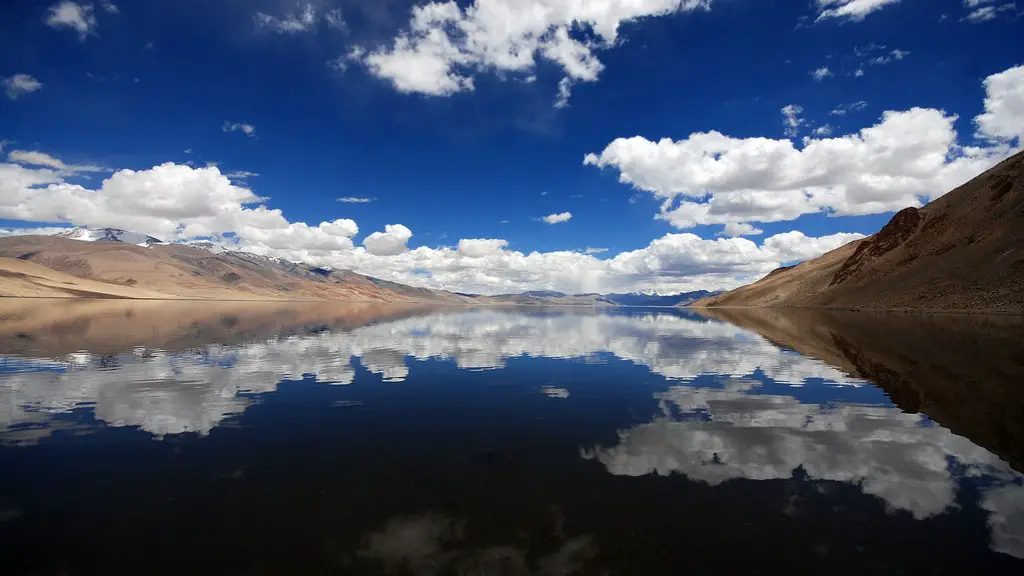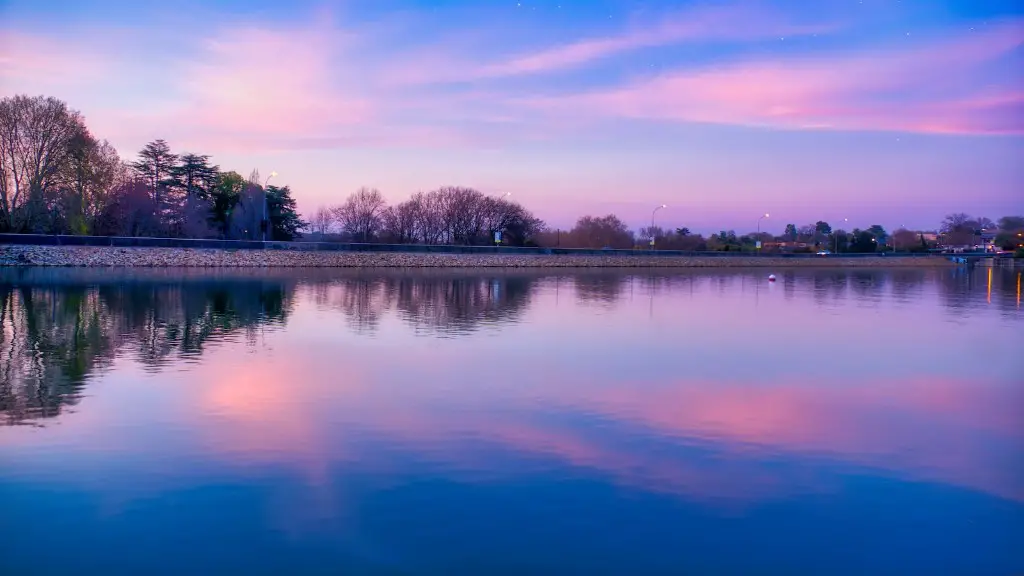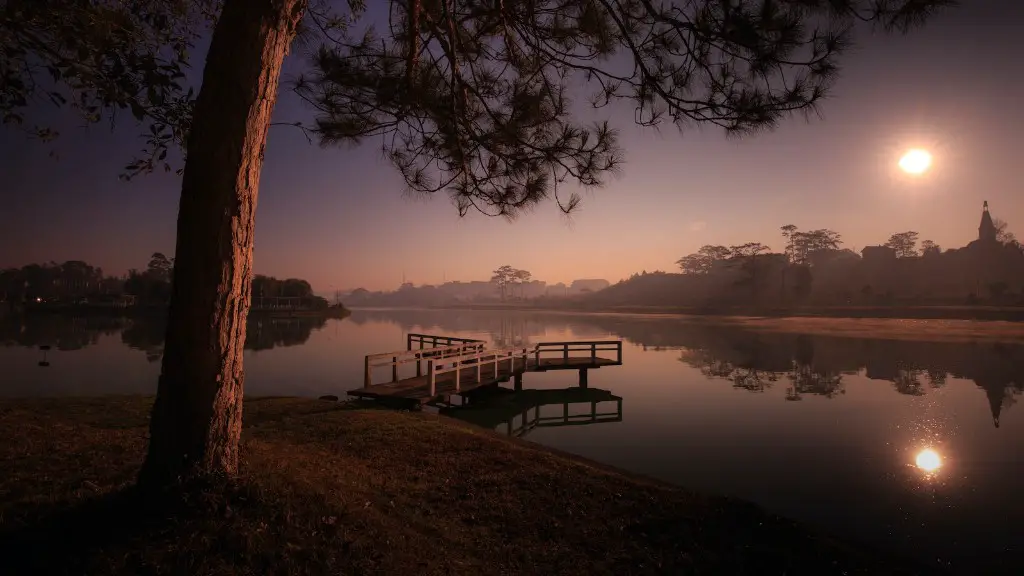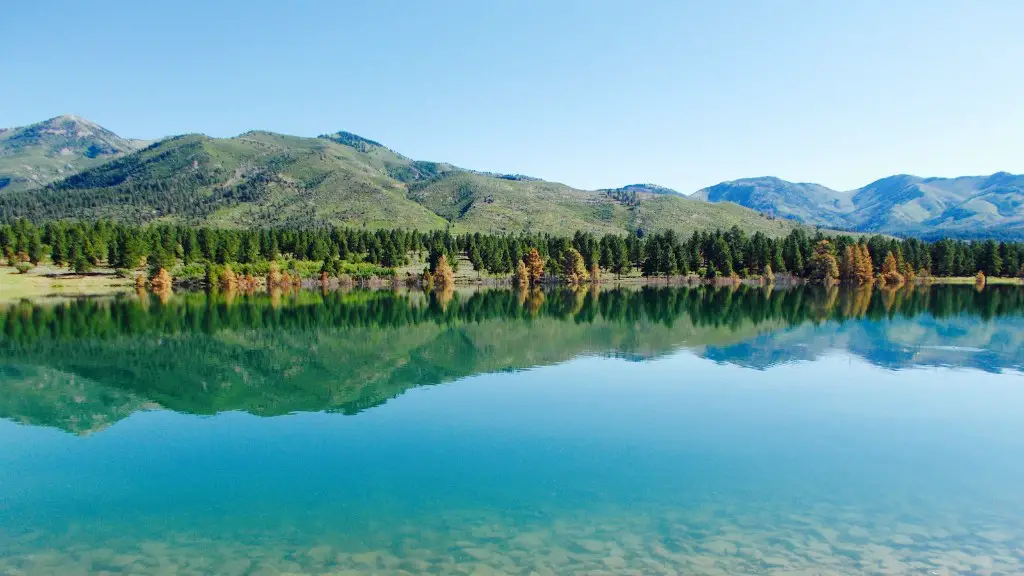When it comes to the Great Lakes, Lake Superior is the largest by surface area, and it is home to some impressive statistics. The lake has the greatest depth of any of the Great Lakes (reaching over 1000 feet in parts), the longest shoreline of any of the lakes at 2,726 miles, and its water volume is the greatest of any freshwater lake on Earth. But one of the questions that many people ask is: when does Lake Superior freeze?
Lake Superior rarely freezes over completely – it usually does so once every 20 to 30 years. However, for many years, the lake has not frozen over during the winter due to its immense size and water volume. The lake is simply too big and too deep to freeze over completely. To give perspective, an extreme cold wave in February 2021 caused the lake temperatures near the shoreline to dip near the freezing point of 32 degrees Fahrenheit (0 degrees Celsius). Though impressive, the lake still did not freeze over completely.
The severe cold wave in February 2021 did, however, cause something interesting to happen: a mix of slushy snow and ice was reported on the lake. This phenomenon is known as snow ice, or algal ice, and it forms as the surface of the lake becomes cold enough for the wind and wave action to churn the lake’s top layer into a slushy, snowy mix. While this doesn’t look much like the traditionally-thought of ice, the snow ice can be up to a foot thick and is dangerous and difficult for ships to maneuver around.
In fact, the danger of snow ice can be especially devastating for ships. In 2019, for example, ice around the Apostle Islands caused ships to become stuck as the ice surrounded them and built up around the ships. These events are an example of why safety is so important when navigating large bodies of water, even if they don’t completely freeze over.
Aside from the sea ice and snow-ice events, the effects of climate change on Lake Superior are also important to consider. Warmer surface and air temperatures in the Great Lakes region have caused the lake to warm up more quickly and stay warm for longer during the summer months. Warmer lake waters can cause the lake to freeze over slower, as warmer water takes longer to freeze. In addition, a longer and slower freeze can lead to more snow-ice formations on the surface of the lake, which can be dangerous for ships.
Though Lake Superior rarely completely freezes over, a combination of colder temperatures and climate change can have a notable effect on the lake. Snow-ice events can be dangerous, and when ships become stuck in ice, the effects can be significant. For this reason, it’s important to take all safety precautions when navigating the lake, regardless of the time of year.
Sea Ice and Climate Change Effects
Sea ice is a form of frozen salt-water ice, commonly found in oceans, and it forms when the water’s surface temperature drops below 32 degrees Fahrenheit (0 degrees Celsius). This ice is different from snow-ice, which is an example of frozen freshwater, found in lakes and rivers such as Lake Superior. While both forms of ice can be dangerous for ships, sea ice is particularly notable for its thickness – sea ice can be thousands of feet thick in extreme cases.
Climate change is another important factor to consider when trying to answer the question: when does Lake Superior freeze? Though the lake rarely freezes over completely, warmer surface and air temperatures can cause the lake to take longer to freeze over and for snow-ice formations to become more common. This warmer temperature can increase the probability of ships getting stuck in ice, which can have serious consequences.
Of course, as with any extreme weather or climate condition, safety precautions should be taken when navigating frozen or partially frozen bodies of water, such as Lake Superior. Expecting these extreme conditions and understanding their implications can help those navigating the lake stay safe and avoid dangerous situations.
Ice Level and Implications
The level of ice on Lake Superior can vary based on temperatures and climate conditions, and certain types of ice are more dangerous than others. Sea ice, as stated above, is significantly more dangerous due to its thickness, and snow-ice is also hazardous as it can cause ships to become stuck in the ice.
In addition, the presence of lake ice can also be hazardous for wildlife such as fish and aquatic life, as the presence of ice can interfere with oxygen levels in the water. Low oxygen levels can make it difficult for fish to survive in colder temperatures. As such, it’s important to take these implications into account when thinking about the effects of ice on the lake.
Safety Considerations for Ships
When it comes to navigating Lake Superior – or any body of water during winter conditions – it’s important to take safety precautions. This includes making sure that ships are well-equipped to handle extreme weather, fitted with properly-running engines and navigational systems, and staffed with experienced crew. It’s also important to have the right safety measures in place, such as life jackets, lifeboats, and distress signals.
Crew onboard ships should also be well-trained in the processes of navigating through ice, as well as identifying and responding to hazardous ice formations. This involves understanding the local conditions and climate, being aware of current weather and ice forms present, and learning about the mechanisms for dealing with these hazards. Taking the time to understand these issues can help keep crew and ships safe during navigation.
Economic Effects on the Shipping Industry
Ice on Lake Superior can also have significant economic implications for the shipping industry, though these implications can depend on the type and level of ice. For example, when there is thick sea ice covering large areas of the lake, ships may be unable to navigate the lake, leading to delays and a decrease in shipment time. This can result in increased costs, as well as decreased efficiency and reliability.
In addition, thick ice can also lead to damage to ships and their cargo, resulting in unplanned repair costs. Snow-ice also presents hazards, as it can cause ships to become stuck, resulting in further repairs and delays. For this reason, it’s important to be prepared and take the necessary safety precautions when navigating ice-covered lakes.
Furthermore, though increased temperatures can reduce the amount of ice on the lake, it can also have unintended and dangerous implications. Warmer lake temperatures can result in stronger ice formations, and stronger wind and wave action can cause hazardous snow-ice formations. As such, it’s important to take the effects of climate change into account when assessing lake ice.
Conclusion:
Lake Superior is one of the largest and most impressive bodies of water on Earth, and its immense size largely precludes it from fully freezing over. However, colder temperatures can cause a variety of effects, including the formation of snow-ice or sea ice, as well as increased hazards for ships navigating the lake. It’s important to understand the implications of colder temperatures and climate change on the lake, and to prepare and take safety precautions when navigating Lake Superior in winter conditions.




